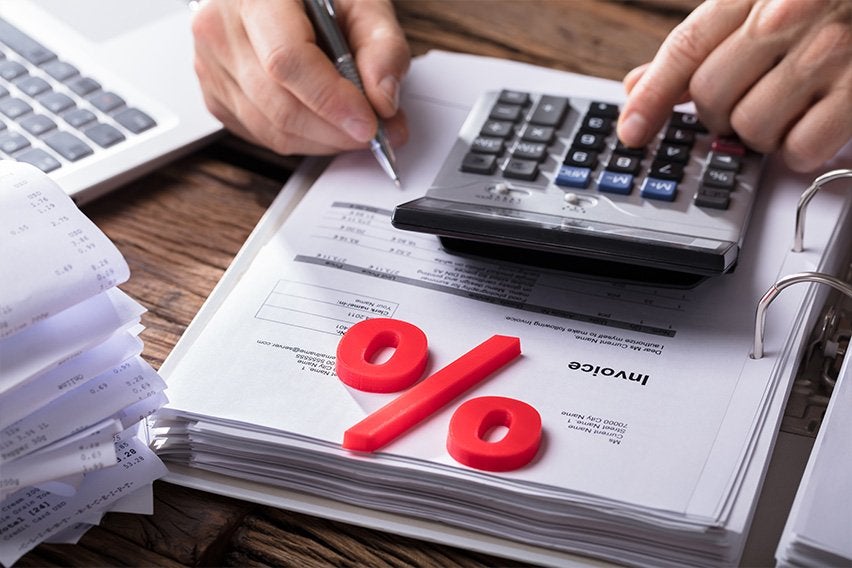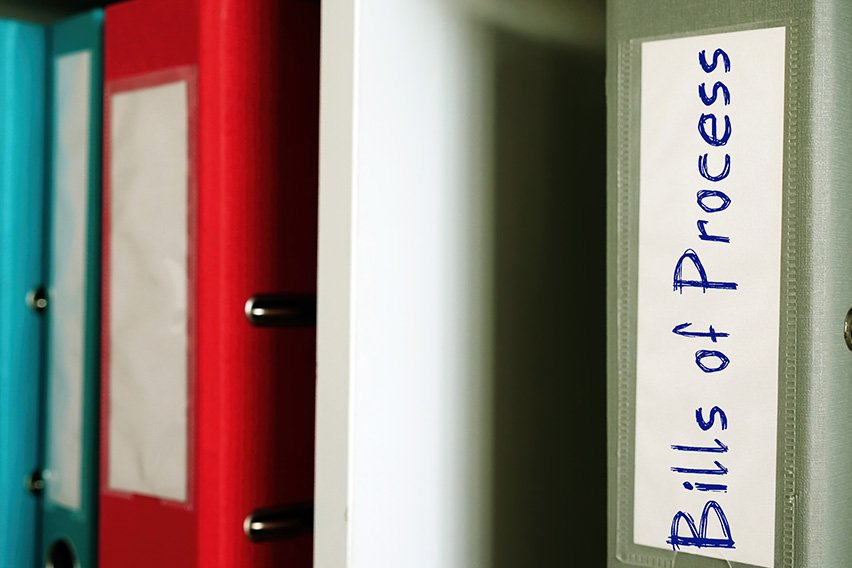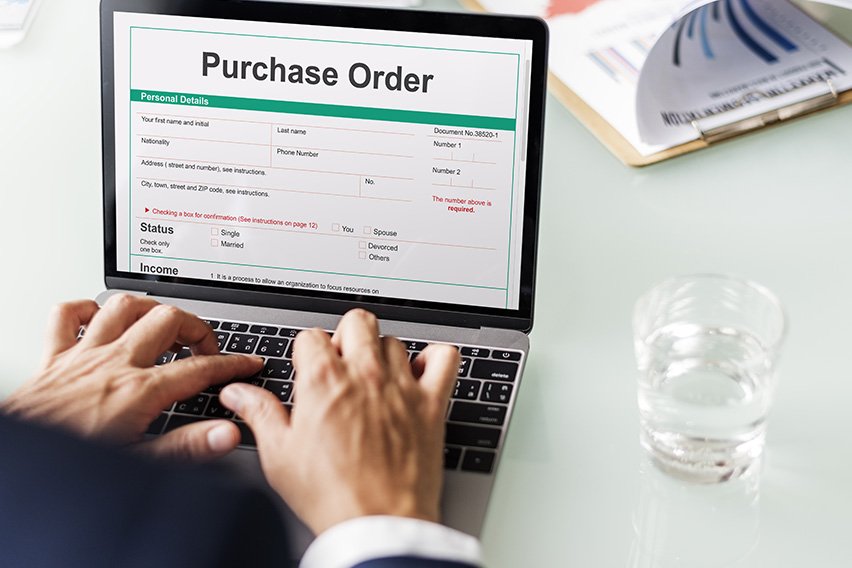Can I Charge Interest on Late Invoice Payments? Invoicing Etiquette Explained

A vendor can charge interest on an unpaid invoice but should only do so when there is a contract or agreement in place that allows for it. Otherwise, there is no legal obligation for the client to pay the additional fee, and adding this charge may harm the business relationship and affect future work opportunities.
Here’s What We’ll Cover:
What Is a Typical Late Fee for Late Invoice?
How Long Do You Have to Pay an Invoice?
Should I Charge Fees for Late Invoice?
What Do You Do When a Client Doesn’t Pay an Invoice?
What Is a Typical Late Fee for Late Invoice?
A typical late fee is either a flat rate or one that is calculated as a percentage of the total owing.

Flat Rate
A flat rate is a dollar amount to the total owing of the invoice that remains unpaid. The exact amount of this charge is up to the vendor.
For instance, a vendor may decide a flat rate of $30.00 is fair for any invoice under $500.00. However, for such a small amount, it’s not just about the money. Charges for late payments encourage the client’s accounting department to start paying by the due date so that they can avoid the time and energy of having to process an invoice twice.
Percentage
This is a predetermined percentage of the total of an invoice that remains unpaid.
Let’s say an invoice is $600.00 and it was required to be paid within 30 days. No payment is made. The vendor’s late fee policy is to charge 5% on the outstanding balance. So, the vendor starts charging interest, in this case $30.00 for the payment which still hasn’t been received.
Again, late fees should only be applied if agreed to previously in writing, otherwise, there is no state or federal law that simply allows a business to add one with the expectation that it will be paid.
You also want to be careful with the amount you are going to charge. 5% is unlikely to raise eyebrows, but a higher percentage might become a negotiation tactic that you want to avoid. This is because as a business, you will be assuming from the get-go that if it’s in the contract, the client is going to pay on time as per the terms. So what you will really want to spend time negotiating on is the price of your product or service.
How Long Do You Have to Pay an Invoice?
Payment terms are set by the seller of the product or service. Usually they are “net 30 days”, “60”, or “90”. A vendor working with a client for the first time should discuss payment conditions at the beginning of the transaction, as often larger businesses have their own payment schedules that may conflict.
Let’s use an example. John runs a small business building custom made, luxury reclining seats. He has been contracted for the first time by a movie exhibitor in Detroit, who is outfitting a brand-new movie theatre with four auditoriums that require special seating. Naturally John is excited about the deal, and the exhibitor provides a contract that stipulates 400 seats must be delivered in six months time to the theatre. He signs it.
Everything goes smoothly. The delivery is made on time and the client is satisfied with the seats. John delivers his invoice and marks it ‘net 30 days’. A month passes. He doesn’t receive payment nor does he hear anything. So, he calls his contact at the exhibitor company only to learn their business has a payment policy of 60 days. The amount of the invoice is considerable and John has his own vendors to pay, who are now asking where their money is. John doesn’t have the financial resources to pay them without getting paid first. So now John is frustrated.
The quality and quantity of the seats, the delivery date and the price were in the contract signed by both parties, but payment terms were not included. The exhibitor simply assumed John would be ok with 60 days payment because that is how they pay all their vendors. John, on the other hand, assumed by writing ‘net 30 days’ on the invoice that it would be paid within that time.
John cannot add a late fee now because the contract does not allow for it. Now it’s possible that if his contact is completely satisfied with the job done, he will talk to his accounting department and get a check out fast. But there’s no guarantee and they are not legally obligated to put a rush on it.
John could have done things differently from the start. He could have requested that his payment terms be included as a clause in the contract before it was finalized. Or he could have asked for a percentage of the final invoice to be paid in advance (which would have also been included in the contract). The other thing John could have done was negotiate that payment be made upon delivery (which would have meant the client would have had a check ready for him when he dropped off the seats).
Should I Charge Fees for Late Invoices?
If it is accounted for in the original deal, then you should charge a late payment fee if your payment terms have not been met. This is because the additional fee was agreed upon by the customer, who is now in breach of the contract.
If the fee is not accounted for in a contract or some form of agreement, you can still attempt to charge one. But you need to weigh this extra dollar amount (which is likely not that large) against the possibility of future business. How important is this client to you? If you charge a late fee now, will it be ignored? As well, will the client take such a fee personally?

What Do You Do When a Client Doesn’t Pay an Invoice?
If a client doesn’t pay you, do not immediately slap a late fee onto your invoice. First, send an email to the client and attach the original invoice to it. Politely remind the client in your email that payment is due, and you have attached a copy of the invoice here for their convenience.
Clients who deal with a lot of invoices appreciate it when a vendor attaches the invoice, because with any invoice status request they have to find the original invoice themselves first in order to source the invoice number. They can’t go to accounting without that number as accounting needs it in order to check on payment. By providing the invoice in that same email, you have saved the client some valuable time.
Allow a day or so and then one of two things will probably happen. The client will confirm that it’s with accounting and give you the status of the payment (it’s possible that a check is already on the way and you simply haven’t received it yet). The other possibility is that the client will notify you that somehow the invoice got lost. The client either didn’t receive it, didn’t open it, didn’t forward it for approval – or somehow when it was sent to accounting it was not processed. At this point though, the client should be telling you how long it will take for you to get paid.
If you still aren’t getting paid or there’s no response, follow up with a phone call. Leave a message if you can’t get through, and then again 48 hours later. Keep a record of when you tried to make contact (include the dates of both the emails and the attempted phone calls). At some point you may have to turn to a collections agency or seek out some legal consultation if you are still owed money, but you should allow a couple of months before pursuing this through the courts. This will show that you were patient and that you gave the client every opportunity to pay up first.
In case you’re a FreshBooks user, check out the link to learn more about how you can set up payment reminders and late fees on FreshBooks.
RELATED ARTICLES

 How to Invoice as a Consultant: Tips for Consulting Businesses
How to Invoice as a Consultant: Tips for Consulting Businesses How to Process an Invoice: A Guide for Small Business Owners
How to Process an Invoice: A Guide for Small Business Owners What Is the Difference Between Purchase Order and Invoice?
What Is the Difference Between Purchase Order and Invoice?